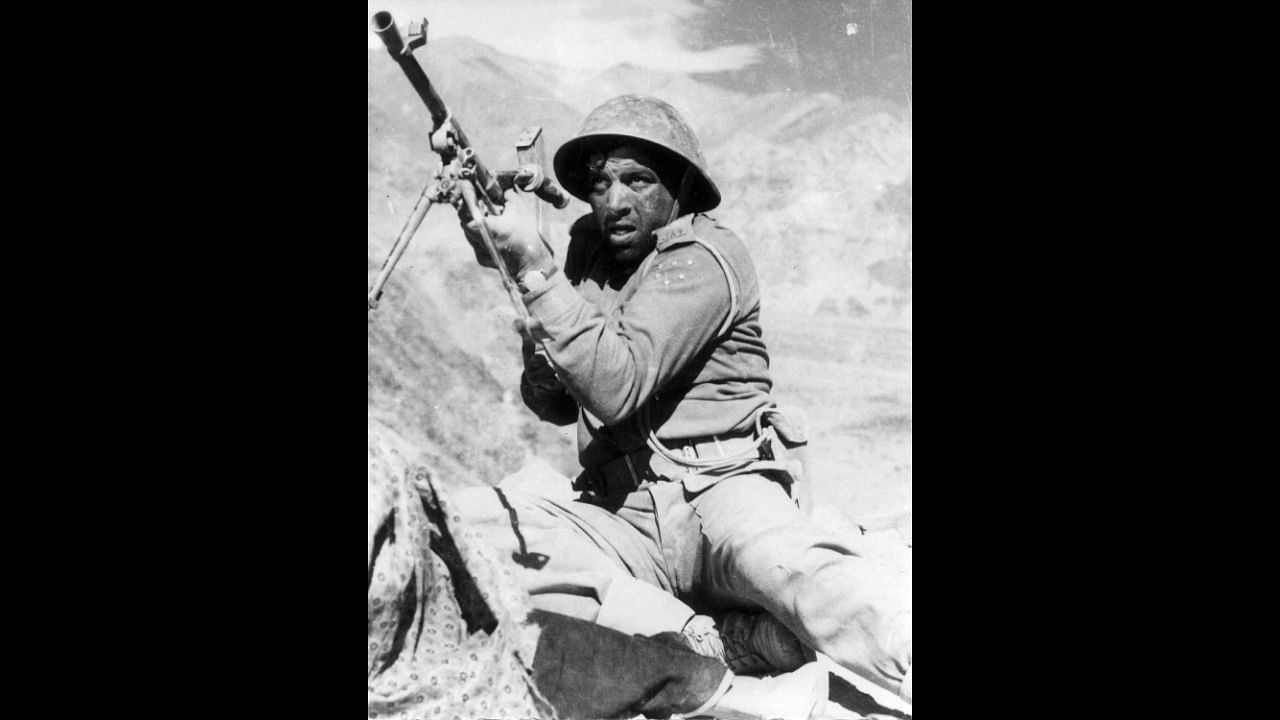
Dharmendra in Haqeeqat.
The then-president, Sarvepalli Radhakrishnan inaugurated the first competitive International Film Festival of India (IFFI), 1965 in New Delhi. Breaking the protocol of his illustrious predecessor, he sat through the entire screening of Haqeeqat. After the screening, he was moved to tears and complimented the writer, director and producer Chetan Anand for creating a magnum opus.
Haqeeqat, India’s first full-length war film still remains the best after 60 years of its release. Though the 1961 film Hum Dono had excellent war scenes, it was not a full length war film like Haqeeqat. After a dark eight-year period, Chetan Anand received finance and support from Pratap Singh Kairon, the then-chief minister of Punjab and prime minister Jawaharlal Nehru.
He was requested to make a film on the lives of the Indian soldiers in the backdrop of the Sino-Indian War of 1962. Chetan Anand always said love and war inspired his creativity. So he took up the Herculean challenge and made several trips to the actual locations of Ladakh where the war took place. Penning down notes from his conversations with various soldiers and the Indian army high command, he wrote the script of ‘Haqeeqat’. It was not a typical script bound by metre and chord.
During the shooting of the film, Chetan Anand used the locations at Ladakh and the Himalayan border where the actual war took place. He created beautiful sets at Mehboob Studio with the help of his chief assistant and art director, M S Sathyu. Speaking to Showtime, Sathyu said, “Chief (Chetan Anand) left no stone unturned to give true life images to his characters and sequences. His portrayal of the actors was the trendsetter for the later films in the parallel cinema movement. I followed it to quite an extent while making ‘Garm Hava’ (1974).
Dharmendra, one of the protagonists of the film recalled: “We shot without food and water supply for a number of days. Yet we were so enthused by Chetan saab’s dedication that we delivered our best performances. ‘Haqeeqat’ remains the most grounded film I ever acted in.” Sanjay Khan who played a cameo in the film told Showtime, “After the international screenings of the film, Chetan saab came back and informed me that my performance was well appreciated. He got me to actually break down to emote for the last scene. It was shot in a single take.”
Kaifi Azmi and Madan Mohan created musical history and the songs were super hits. Chetan Anand introduced Bhupinder Singh as an actor and singer in the film.
However, ‘Haqeeqat’ had its faults too. The People’s Liberation Army Chinese soldiers appeared unrealistic and were not shown in good light. They appeared parochial. The piercing of the Red Book of Mao Tse Dung by the bayonet of an Indian soldier irritated many true socialists. It was Communist Party of India’s unconditional surrender to Nehruvian Socialism that later led to the party’s split.
Neville Maxwell’s book, India’s China War, then banned by the Congress government gives ample proof of the war’s realities which ‘Haqeeqat’ did not highlight. It is not without reason that the former prime minister Morarji Desai stated many aspects of the Sino-Indian war will never come to the limelight. Though ‘Haqeeqat’ had a lacuna — no mention of the disputed McMahon line — it remains a cinematic marvel to this day.